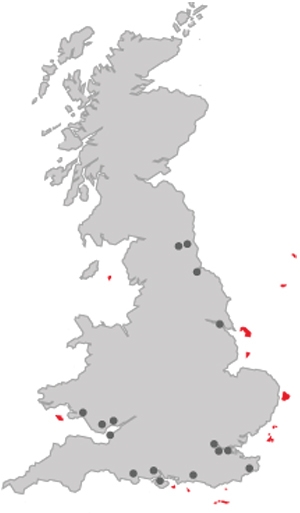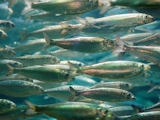Mineral Extraction Licences
All aggregate extraction undertaken by CEMEX UK Marine takes place on licensed areas, predominantly in UK waters.
The mineral rights to the sea-bed around the UK are owned by the Crown Estate, which issues licences for extraction. A royalty is paid to the Crown Estate for every tonne dredged and the bulk of revenue is passed to the Exchequer. The Crown Estate will only issue a ‘Production Agreement’ if a Marine Licence is granted by the Marine Management Organisation (MMO) in England, or Natural resources Wales (NRW) in Wales.
Marine aggregate prospecting rights are awarded by the Crown Estate following competitive tender. If a viable deposit is located, then an application to dredge is submitted to the relevant authority accompanied by an Environmental Impact Assessment (EIA). A regulatory decision is reached after consultation with statutory advisers and other bodies such as fishing organisations and local authorities. Marine Licence applications are also advertised in newspapers and comments from the general public are considered at the licence determination stage.
If an application is considered environmentally acceptable then a Marine Licence is granted and a Production Agreement enacted. Marine Licences will include any mitigation and monitoring measures required by the regulatory authorities. Conditions are commonly attached including regular environmental monitoring and zoning to restrict the area dredged at any one time.
To ensure compliance, all vessels working in England and Wales must be equipped with a Crown Estate Electronic Monitoring System (EMS). This records the position and dredging status of the vessel and this data is analysed by the Crown Estate. Positioning of the vessel is achieved by a highly accurate satellite navigation system known as DGPS.
Marine Environment Awareness
Environmental awareness is of considerable and increasing importance, CEMEX, as producers of both land-won and sea-dredged materials are acutely aware of our responsibilities.
Sand and gravel is only taken from licensed areas, with permission to draw materials obtained from the relevant regulatory authority in England or Wales.
Although marine aggregates now represent in excess of 20 per cent of the usage of sand and gravel in England and Wales, dredging licences cover only a small percentage of the UK continental self and an even smaller area is dredged in any year.
In common with planning permission for land-based extraction, the process for gaining a Marine License is both rigorous and extensive. A License will only be granted after wide consultation with relevant agencies, authorities and other sea-bed users and after undertaking a detailed Environmental Impact Assessment (EIA). As part of the EIA, consideration is given to all potentially significant effects, including coastal erosion, fisheries, other marine life, and archaeology.
Marine life
Evidence also suggests that the impact on other marine life is confined to the dredging area and relatively short-lived, with no significant long-term effect on biodiversity. After dredging completion, re-colonisation begins almost immediately and the seabed is biologically similar, typically within 2-5 years, longer in some cases.
Coastal erosion
Coastal erosion driven by waves and currents is a natural phenomenon that affects both beaches and cliffs. Our marine business commissions independent detailed studies before permission to dredge is granted involving careful hydrodynamic analysis. Where necessary, monitoring is performed to ensure acceptable limits are not exceeded and no impacts at the coast occur.
Fisheries
Careful liaison between groups representing local fishermen's interests, scientific organisations and the dredging industry ensures the minimum of disruption occurs. If the proposed dredging licence lies in a sensitive area such as a spawning ground then strict mitigation measures will be imposed or, if mitigation is not possible, consent may be denied.
Archaeology
The preservation of marine heritage and archaeology, namely wrecks and submerged landscapes, are strictly observed by a jointly developed code of practice used by the marine aggregate industry which includes mapping of the seabed prior to dredging to establish the positions of any wrecks and other archaeological features. CEMEX UK Marine adhere to reporting procedures as part of an industry-wide archaeological reporting protocol in partnership with BMAPA and English Heritage.
CEMEX UK Marine, pursue the discharge of their environmental responsibilities with determination. Marine aggregates are fully recyclable and can be reused for other building projects when a structure constructed from them reaches the end of its life. Therefore providing new consents continue to be granted, the activities of responsible companies such as our marine business are designed to ensure that any environmental impacts remain at a minimum, and that the supply of high-quality marine aggregates will be guaranteed for generations to come.






